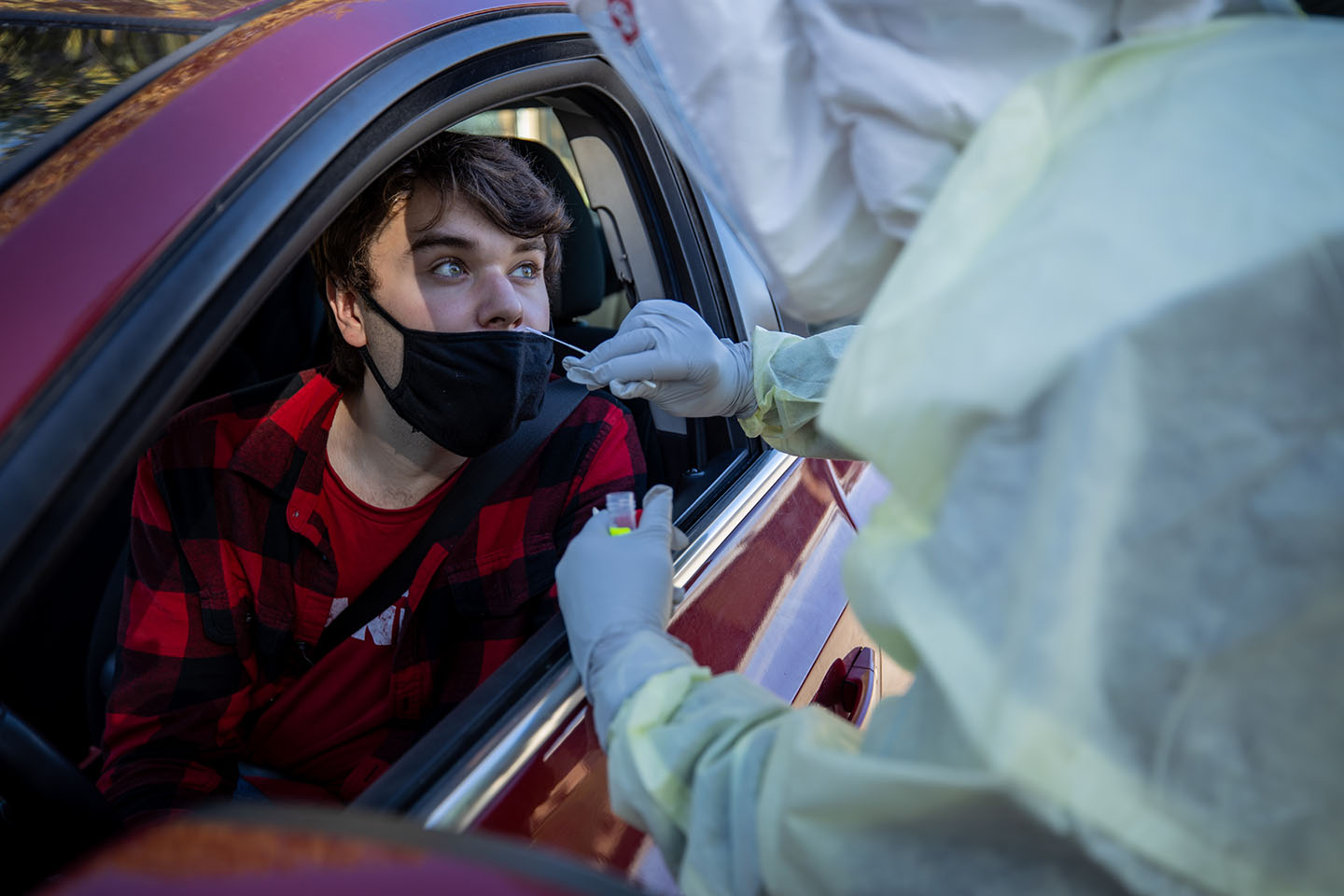
USD implements random COVID-19 tests for asymptomatic campus population
To assess whether it needs to implement further safety measures on campus, USD has begun weekly COVID-19 surveillance testing of asymptomatic students and staff.
Kevin O’Kelley, member of USD’s COVID-19 task force, said the testing of asymptomatic students and staff is one of three COVID-19 testing programs on campus. The second is the testing of symptomatic students and anyone they’ve been in close contact with and the third is the NCAA’s own surveillance testing of student athletes.
Tim Ridgway, dean of the medical school, said 40-45% of people 18 to 22 years of age could be asymptomatic carriers of the virus and therefore spread it unknowingly. This, Ridgway said, puts students’ families and immunocompromised persons at risk.
“If we can prevent serious illness and death across campus, across the community and across your family members, that is a real win,” Ridgway said.
buy valtrex generic https://noprescriptionbuyonlinerxx.com/valtrex.html over the counter
Every week, five percent of asymptomatic students and staff — which O’Kelley said totals about 70 people — are invited to Sanford Vermillion Medical Center to be tested. Tests are paid for by the South Dakota Department of Health (DOH).
People are chosen based on demographic information — majors, residence halls and buildings they study in. O’Kelley said this allows the university to investigate areas of campus which might have more cases, and from there, they can institute new safety policies.
“We might need to increase the physical distancing in a building, or increase our cleaning frequency. Maybe there’s a super spreader event that we need to ask about,” O’Kelley said. “It’s not just to know who’s sick, it’s to use that data to prevent the next person from becoming sick.”
O’Kelley said the task force relies on guidance from the DOH, and that the state’s epidemiologist, Joshua Clayton, recommended five percent of the population be tested per month.
So far, O’Kelley said, participation has been low — only about 20% of invited students have gotten tested. He said this could be because students don’t see a need to get tested if they don’t have any symptoms, and if they do test positive, they know they have to isolate for a period of time.
“People might tend to think the negative consequences of needing to isolate in the event of a positive test outweigh the social benefits of knowing that we have asymptomatic people in our population,” O’Kelley said. “I believe the benefits of knowing the asymptomatic population that is positive is a useful bit of information, and of course, the state of South Dakota agrees with me.”
So far, the program has yielded one positive asymptomatic staff test and zero positive asymptomatic student tests.
O’Kelley said the task force is currently figuring out the most efficient way to test students and staff, so to increase testing participation, the task force will begin inviting more asymptomatic students to get free tests starting next week.
“If we’re only going to get 20 or hopefully 30% of people to volunteer, then we’re going to invite more people,” O’Kelley said. “We’re still in the learning phase of how to offer and conduct voluntary testing of asymptomatic populations.”
In the event participation increases drastically, O’Kelley said Sanford is equipped to handle the surge in testing.
Ridgway said USD and the Vermillion community have done a great job implementing strategies to mitigate the spread of the virus. If followed religiously, Ridgway said, these strategies — which include social distancing and frequent hand washing — are effective.
“The students deserve a lot of credit,” Ridgway said. “The fact they’re wearing masks, the fact that they’re following social distancing roles, that they’re limiting these gatherings, has been effective.”
Even with 49 cases on campus as of Oct. 13, according to the COVID-19 dashboard, Ridgway said students must be careful and continue to adhere to safety policies in order to prevent classes going online for the spring semester.
“The mitigation strategies appear to be effective,” Ridgway said. “But we’re not out of the woods, and we have to continue them for the present time, or our fear is it’s going to happen again.”


